Gold has been mined in the U.S. for over two centuries and remains an important industry today. The discovery of gold in California in 1848 set off a gold rush that drew thousands of people to the region in search of riches. Since then, gold has been found nationwide. Today, we explore the top 18 states with the most gold.
#1 Nevada

Nevada produces 70% of the United States’ annual gold.
©iStock.com/gguy44
Nevada is the U.S.’s largest gold-producing state, accounting for over 70% of the country’s annual output.
The state is home to some of the world’s largest and most profitable mines, including:
- The Carlin Trend
- Cortez Trend
- Goldstrike Mine
- Round Mountain Mine
The state’s mineralization is primarily associated with fault zones and sedimentary rock formations.
Nevada has produced over 225 million ounces of gold since the mid-1800s. The state’s top gold-producing counties are:
- Eureka
- Elko
- Nye
The three counties account for over 90% of Nevada’s gold production.
Nevada has an estimated reserve of over 100 million ounces and over 200 million ounces of resources.
#2 Colorado
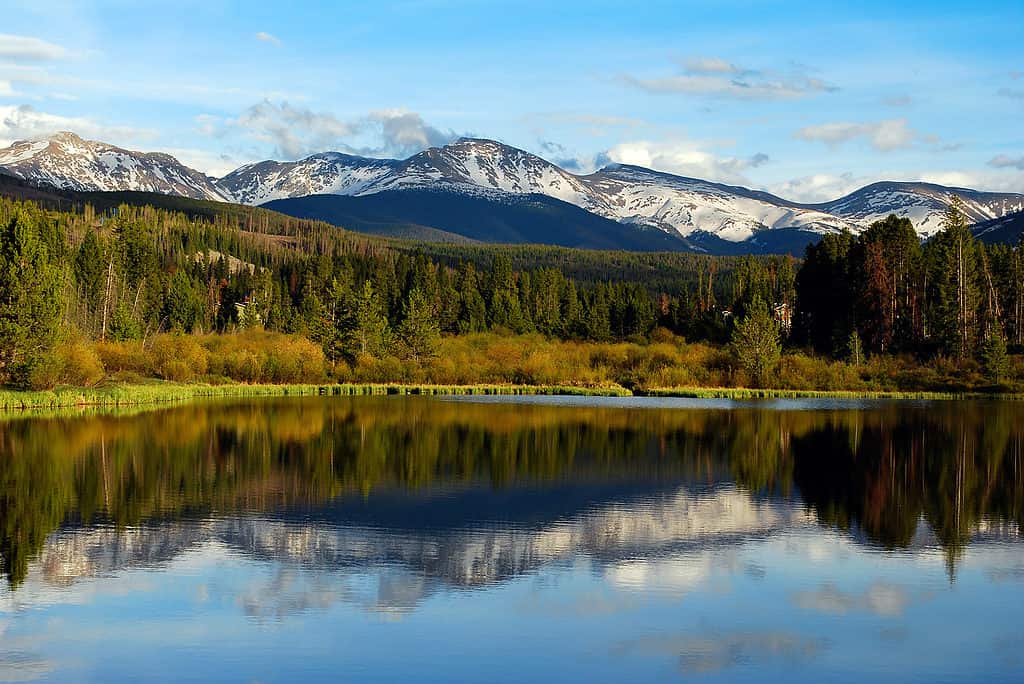
Colorado ranks second highest state in gold production.
©iStock.com/Adam-Springer
Colorado is home to some of the largest and most productive mines in the U.S., and it continues to be a major producer of gold today.
The mining industry primarily focuses on large-scale industrial operations. Some of the largest gold mines in Colorado include:
- The Cresson Mine
- The Phoenix Mine
- The Fort Knox Mine
Colorado has produced over 44 million ounces since the mid-1800s. The top gold-producing counties are:
- Teller
- San Miguel
- Summit
These areas account for over 70% of Colorado’s gold production.
Colorado features an estimated reserve of over 6 million ounces and resources of over 20 million ounces.
#3 South Dakota
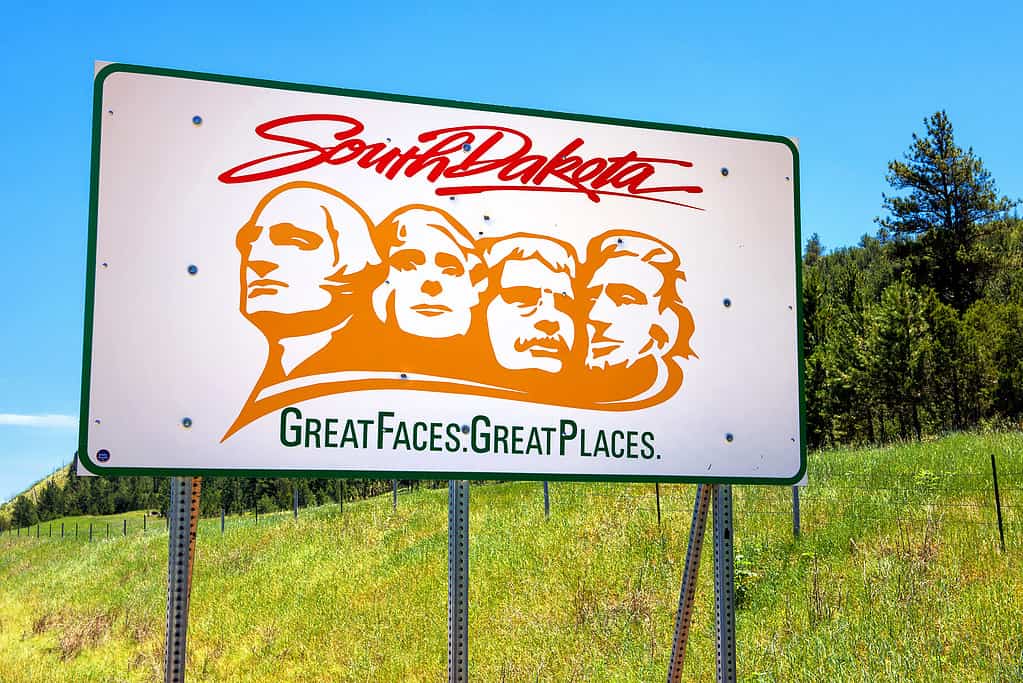
South Dakota’s known for Mt. Rushmore but is also a distinguished gold state.
©Ingo70/Shutterstock.com
South Dakota also features a rich gold mining history. It has significant reserves and resources of precious metal.
The gold mining industry is focused on large-scale industrial operations that use advanced mining techniques and equipment. Some of the major mines in South Dakota include:
- The Homestake Mine
- The Wharf Mine
- The Golden Reward Mine
South Dakota has produced over 40 million ounces since the state’s first discovery. South Dakota’s top counties are:
- Lawrence
- Pennington
- Custer
The counties account for over 90% of South Dakota’s gold production.
South Dakota has significant reserves and resources of gold, with estimated reserves of over 1 million ounces and resources of over 6 million ounces.
#4 Wyoming

Wyoming has significant gold reserves.
©iStock.com/rarrarorro
Wyoming has significant gold reserves and resources, although its mining industry is smaller than some other states on this list.
Several small-scale gold mines in the southwestern part of the state primarily focus on extracting gold from placer deposits. They include:
- The Carissa Mine
- The South Pass Mine
Wyoming has produced over 2 million ounces of gold since its discovery in the state. Fremont County is the state’s top gold-producing county, producing over 1 million ounces of gold.
Wyoming has significant reserves and resources of gold, with estimated reserves of over 400,000 ounces and resources of over 1 million ounces.
#5 Montana
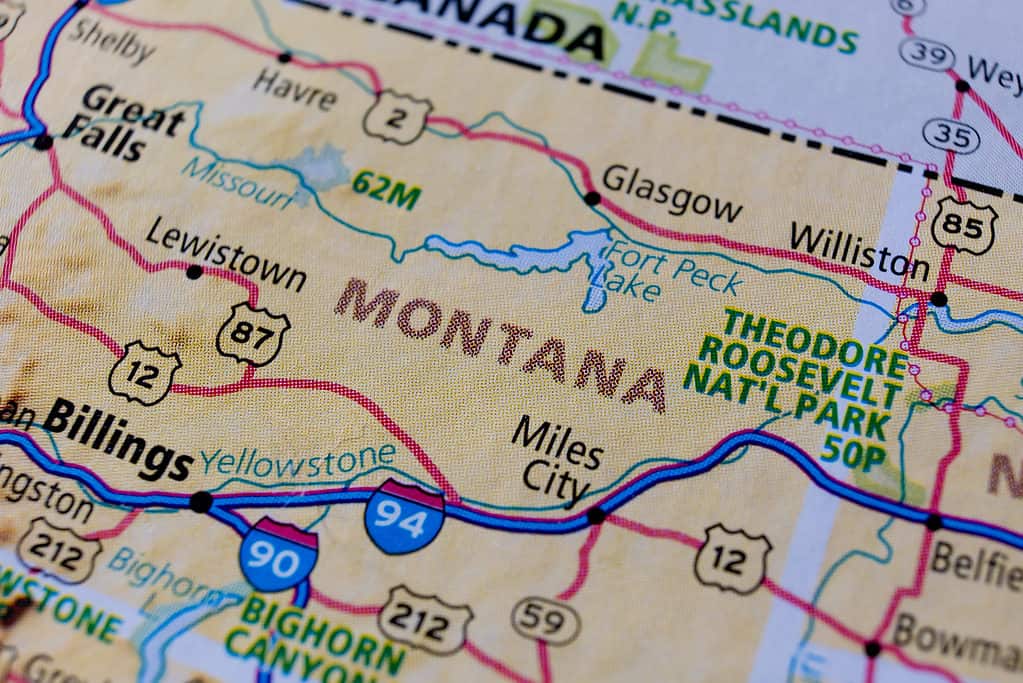
Montana has large-scale mining operations, making it a major gold state.
©Leo_nik/Shutterstock.com
Montana’s gold deposits are primarily located in the western part of the state, with several large-scale gold mines.
Montana’s gold mining industry primarily focuses on large-scale mining operations that use modern mining techniques to extract gold from underground ore deposits.
Some of Montana’s large-scale gold mines, including:
- The Golden Sunlight Mine
- The Zortman-Landusky Mine
Montana has produced over 20 million ounces of gold since the discovery of gold in the state.
The state’s top gold-producing county is Jefferson County, which has produced over 4 million ounces of gold.
Montana has significant reserves and resources of gold, estimated at over 3 million and 10 million ounces, respectively.
#6 Idaho
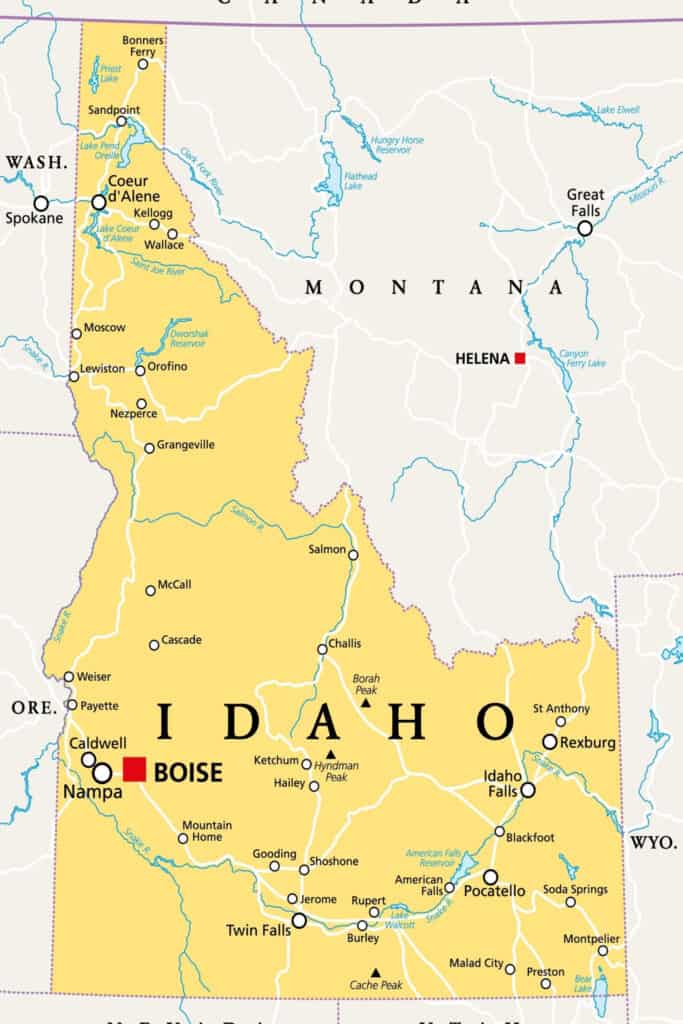
Idaho produces more than potatoes, it also produces gold.
©Peter Hermes Furian/Shutterstock.com
Idaho is another major play with several large-scale gold mines.
Gold mining in Idaho primarily focuses on large-scale mining operations that extract gold from underground ore deposits. The state’s gold mines use modern mining techniques to extract gold from ore, which is then processed to extract the gold.
Idaho is home to several large-scale mines, including:
- The Bingham Canyon Mine
- The Stibnite Gold Project
Idaho has produced over 8 million ounces of gold since its discovery in the state.
Blaine County is the state’s top county, producing over 2 million ounces of gold.
Idaho has significant reserves and resources of gold, estimated at over 3 million and 15 million ounces, respectively.
#7 Utah

Utah’s gold mines use modern mining techniques to extract gold from ore.
©Claudio Del Luongo/Shutterstock.com
Utah is an important gold-producing state in the U.S., with several active gold mines.
Gold mining in Utah focuses on large-scale mining operations that extract gold from underground ore deposits.
The state’s gold mines use modern mining techniques to extract gold from ore, which is then processed to extract the gold.
Utah is home to several large-scale gold mines, including:
- The Bingham Canyon Mine
- The Kennecott Copper Mine
- The Goldstrike Mine
Utah has produced over 7 million ounces of gold since its discovery in the state.
The state’s top gold-producing county is Tooele County, which has produced over 4 million ounces of gold.
Utah has significant reserves and resources of gold, with estimated reserves of over 1.5 million ounces and resources of over 6 million ounces.
#8 Oregon

Oregon has no large-scale gold mines, with most of the state’s gold production coming from small-scale mining operations.
©Nature’s Charm/Shutterstock.com
Gold mining in Oregon is focused on small-scale mining operations that use traditional mining methods, such as panning and sluicing, to extract gold from streams and rivers.
The state’s gold resources are found primarily in the southwestern part, in areas such as:
- The Rogue River
- Applegate River
While the state’s gold production is relatively small compared to other gold-producing states, recreational gold mining remains a popular pastime for many Oregonians.
Oregon has no large-scale gold mines, with most of the state’s gold production coming from small-scale mining operations.
Some of the more popular mining areas in the state include:
- The Bohemia Mining District in Lane County
- The Quartzville Mining District in Linn County
Oregon has produced over 6 million ounces of gold since its discovery in the state.
While the state’s gold production has declined significantly since the early 1900s, there are still significant gold resources in the state, particularly in the southwestern part.
#9 New Mexico

New Mexico has produced over 2.5 million ounces of gold since its discovery in the state.
©photoBeard/Shutterstock.com
Gold mining in New Mexico is focused on small-scale mining operations, with the state’s gold resources found primarily in the southern part.
The state’s gold resources are found primarily in the southern part, in areas such as:
- The Ortiz Mountains
- The Gila Wilderness
Today, gold mining in New Mexico is focused on small-scale mining operations that use traditional mining methods, such as panning and sluicing.
New Mexico has no large-scale gold mines, with most of the state’s gold production coming from small-scale mining operations.
Some of the more popular mining areas in the state include:
- The Pinos Altos Mining District
- The Mogollon Mining District
New Mexico has produced over 2.5 million ounces of gold since its discovery in the state.
While the state’s gold production has declined significantly since the early 1900s, there are still significant gold resources, particularly in the southern part.
#10 Washington

Washington has produced over 2 million ounces of gold since its discovery in the state.
©Shane N. Cotee/Shutterstock.com
Most of the gold mining in Washington State is done by small-scale operations, with the state’s gold resources primarily located in the northeastern part of the state.
Washington State is known for its abundant natural resources, including gold. Most of the gold mining in the state is done by small-scale operations that use traditional mining methods, such as panning and sluicing.
Some of the more popular mining areas in the state include:
- The Liberty Mining District
- The Swauk Mining District
Washington has produced over 2 million ounces of gold since its discovery in the state.
#11 South Carolina
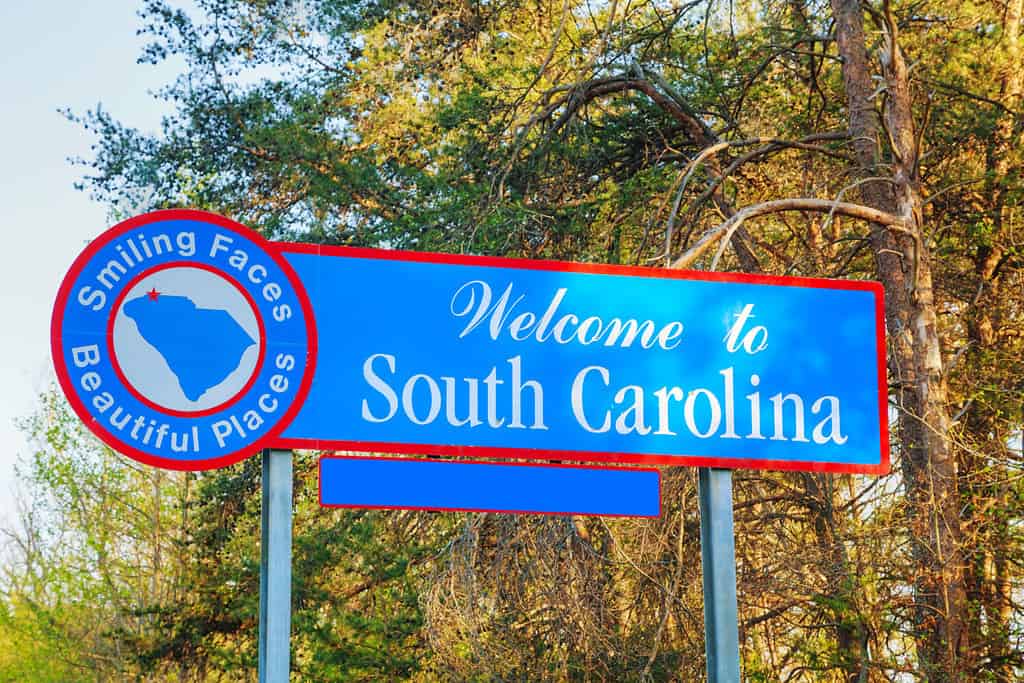
One of the largest gold mines in the eastern U.S. was the Haile Gold Mine, found in South Carolina.
©photo.ua/Shutterstock.com
South Carolina was once home to the largest gold mine in the eastern U.S. – the Haile Gold Mine. It operated from 1827-1912 and reopened in 2007.
Today, gold mining in South Carolina is primarily done by small-scale operations that use traditional mining methods.
Other significant gold mining areas in the state include:
- The Brewer Mine
- The Ridgeway Mine
Since its first discovery, South Carolina has produced over 1.2 million ounces of gold.
While the state’s gold production has declined significantly since the early 1900s, the Haile Gold Mine continues to produce gold today, with an estimated 4.1 million ounces of gold reserves.
#12 Michigan

The state’s gold resources are located in the Upper Peninsula.
©TheSandwich/Shutterstock.com
Michigan is not typically thought of as a gold-mining state, but it has a significant history of gold production.
The state’s gold resources are located in the Upper Peninsula. While gold mining in the state is not a major industry, small-scale operations still extract gold from the area’s rivers and streams.
Most of the state’s gold resources are located in the northern parts of the peninsula, known for its rugged terrain and dense forests.
Some of the most significant gold mining areas in the state include:
- The Upper Peninsula’s Menominee River
- The Ontonagon River
Michigan has produced over 1.5 million ounces of gold since the first discovery in the state.
While gold mining in Michigan is not currently a major industry, there is still potential for further exploration and development of the state’s gold resources.
#13 Georgia
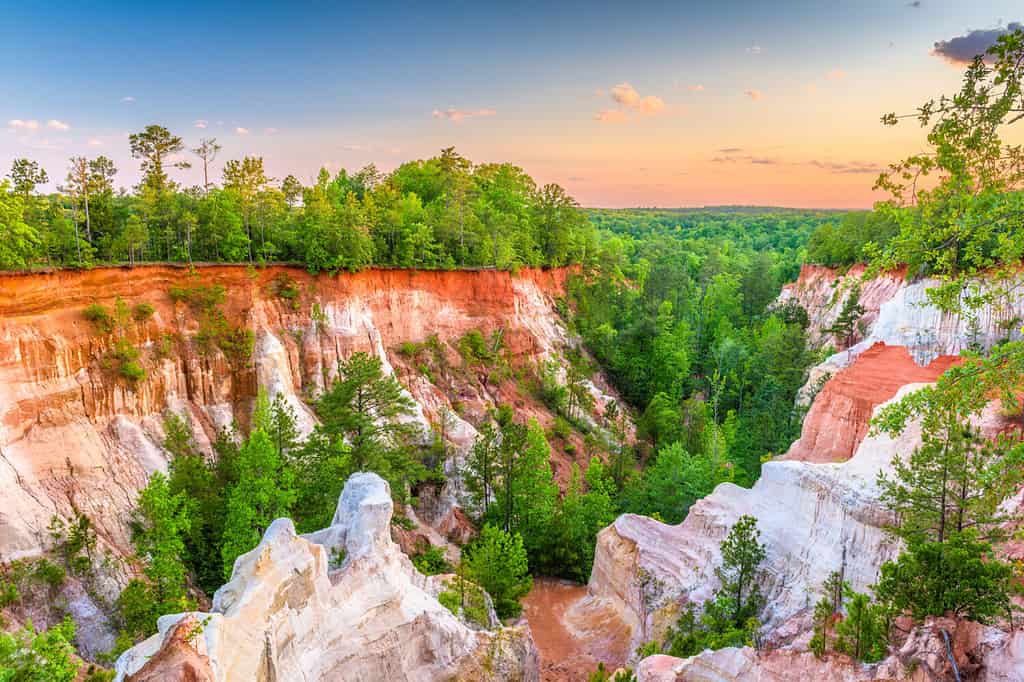
The largest gold mines in Georgia are located in the northern part of the state.
©Sean Pavone/Shutterstock.com
Georgia State has produced millions of ounces of gold, and the industry continues to play a significant role in Georgia’s economy.
Georgia has numerous gold mines scattered throughout the state, with some of the largest located in the northern part.
Some of the most significant gold mining areas in Georgia include:
- The Dahlonega Gold Belt
- The City of Cripple Creek
Georgia has produced over 8.5 million ounces of gold since the first discovery in the state.
While the industry has experienced some declines in production over the years, it remains an important sector in Georgia’s economy.
#14 North Carolina
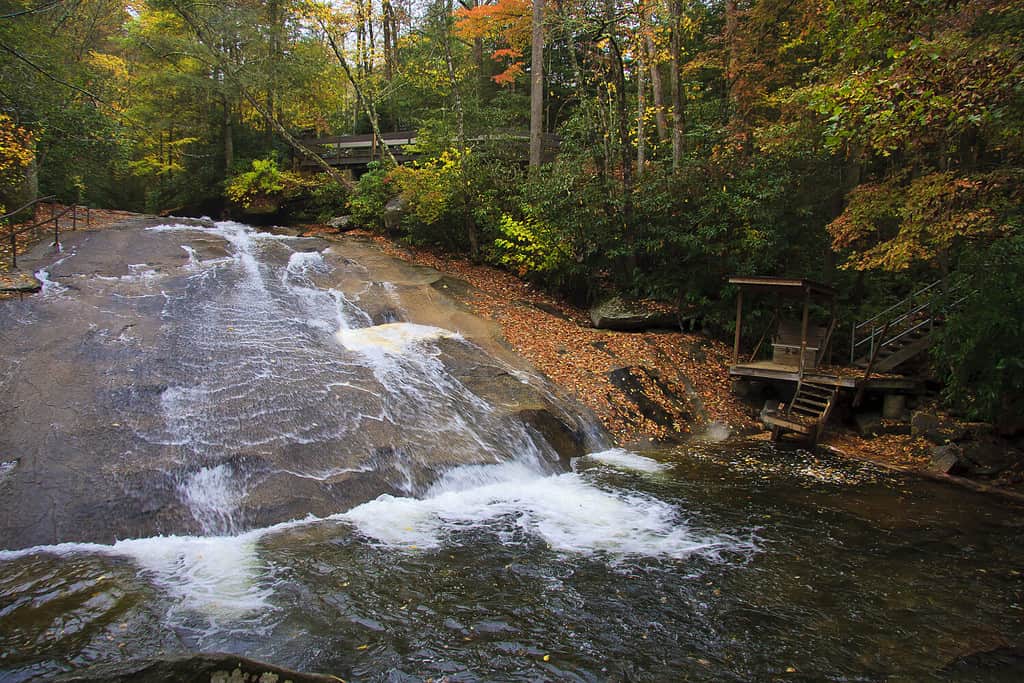
While the industry has declined in recent years, there is still significant potential for gold deposits in the state.
©Jill Lang/Shutterstock.com
North Carolina’s gold production is primarily done on small-scale, recreational mining.
Some of the most significant gold mining areas in North Carolina include:
- The Carolina Slate Belt
- The Uwharrie Mountains
- The Reed Gold Mine
North Carolina has produced over 1 million ounces since the first discovery in the state.
While the industry has declined in recent years, there is still significant potential for gold deposits in the state.
#15 Tennessee
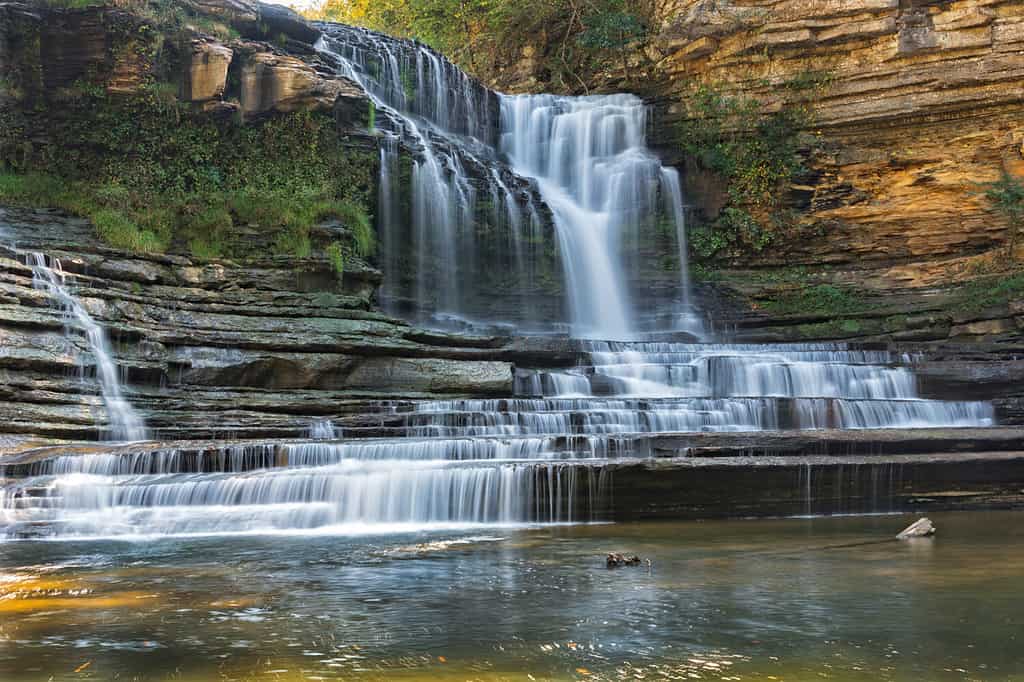
Tennessee has produced an estimated 90,000 ounces of gold since the first discovery in the state.
©Jim Vallee/Shutterstock.com
Tennessee has several small-scale mines spread throughout its borders. Some of the notable ones include:
- The Douglass Mine—one of the most productive mines in the state
- The Coker Creek district—a popular location for recreational gold prospecting
Tennessee has produced an estimated 90,000 ounces of gold since the first discovery in the state.
While this is a relatively small amount compared to some of the other states on this list, there is still potential for additional deposits to be discovered.
#16 Texas

Texas had an oil and gold boom in the past.
©Janece Flippo/Shutterstock.com
Gold mining in Texas dates back to the early 19th century, with several small-scale mining operations occurring throughout the Lone Star State. However, the industry experienced a boom in the late 1800s with the discovery of large deposits in West Texas.
Some of the major mines in Texas include:
- The Presidio Mine in Presidio County
- The Hazel Mine in Culberson County
Texas has produced an estimated 1.7 million ounces throughout its history, making it one of the top 10 gold states in the U.S.
#17 Virginia
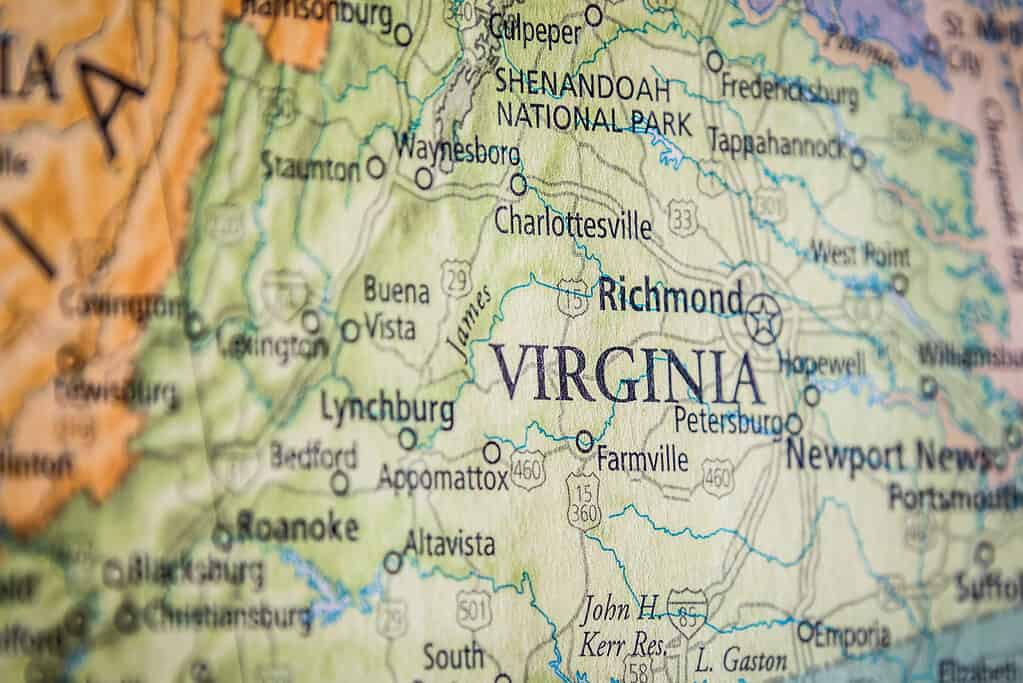
Virginia, also known as the Commonwealth of Virginia, has multiple significant mines.
©BestStockFoto/Shutterstock.com
Virginia’s most significant mine was the Franklin Mine in Spotsylvania County. It operated from 1831 until 1861 and produced over 50,000 ounces.
Other notable mines in Virginia include the Goodwin Gold Mine in Buckingham County, the Gold Hill Mine in Culpeper County, and the Whitehall Mine in Orange County.
The total amount of gold mining in Virginia is estimated at around 500,000 ounces. Most of the gold was found in Virginia’s Piedmont region, which stretches from the Blue Ridge Mountains to the Atlantic Coastal Plain.
#18 Wisconsin
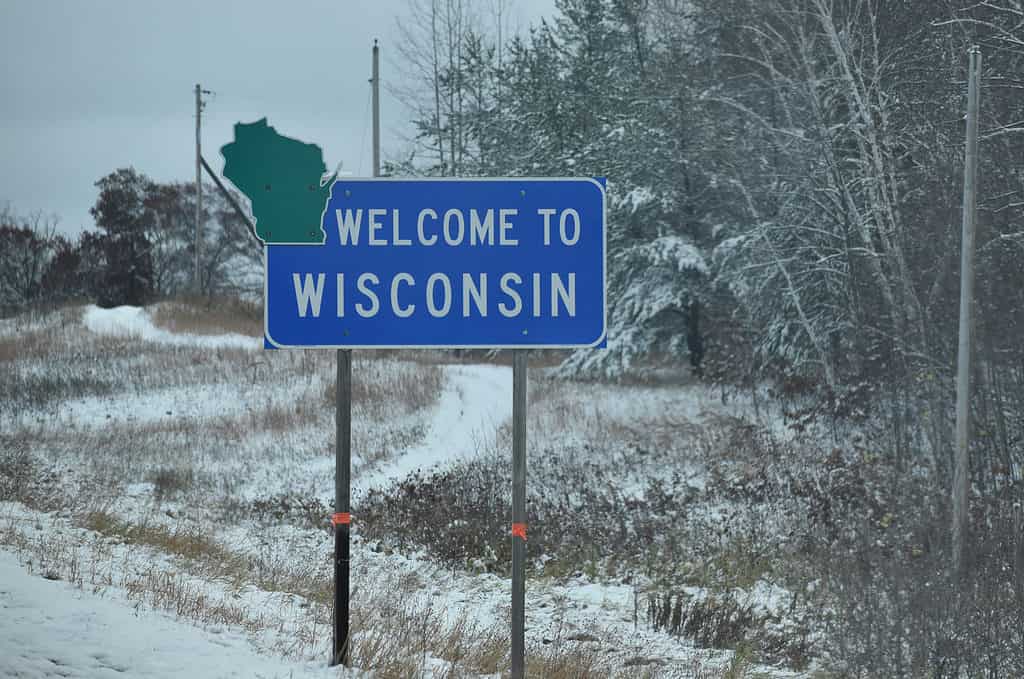
Wisconsin gets much of its gold from lode deposits.
©Michele M Vogel/Shutterstock.com
Historically, gold exploration has been in Wisconsin‘s northern region near Lake Superior, in areas such as the Menominee River Valley and the Black River Falls district.
Most of the gold found in Wisconsin is from lode deposits rather than placer deposits, which makes it more difficult to extract.
The Flambeau Mine is Wisconsin’s most significant mine. It’s located in Ladysmith in Rusk County. The mine operated from 1993 to 1997, producing approximately 181,000 ounces of gold. The mine is now closed and undergoing environmental remediation.
Wisconsin’s gold production has been limited, with the Flambeau Mine being the only significant producer.
The total gold production in Wisconsin from 1860 to 1965 was 55,000 ounces. Wisconsin’s reserves are estimated to be around 600,000 ounces.
Key Takeaways
The U.S. is home to some of the world’s largest and most productive gold mines, with significant amounts of the precious metal being produced nationwide. Nevada remains the top state with the most gold. However, many other states, including Colorado and Wyoming, also have significant reserves and mining history.
Summary Of The 18 States That Are Rich With The Most Gold
| Rank | State | Gold Produced |
|---|---|---|
| 1 | Nevada | over 225 million ounces |
| 2 | Colorado | over 44 million ounces |
| 3 | South Dakota | over 40 million ounces |
| 4 | Wyoming | over 2 million ounces |
| 5 | Montana | over 20 million ounces |
| 6 | Idaho | over 8 million ounces |
| 7 | Utah | over 7 million ounces |
| 8 | Oregon | over 6 million ounces |
| 9 | New Mexico | over 2.5 million ounces |
| 10 | Michigan | over 2 million ounces |
| 11 | South Carolina | over 1.2 million ounces |
| 12 | Washington | over 1.5 million ounces |
| 13 | Georgia | over 8.5 million ounces |
| 14 | North Carolina | over 1 million ounces |
| 15 | Tennessee | an estimated 90,000 ounces |
| 16 | Texas | over 1.7 million ounces |
| 17 | Virginia | estimated at around 500,000 ounces |
| 18 | Wisconsin | 55,000 ounces but reserves are estimated at 600,000 ounces |
The photo featured at the top of this post is © RHJPhtotos/Shutterstock.com
Thank you for reading! Have some feedback for us? Contact the AZ Animals editorial team.






